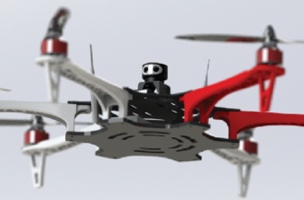“Our main goal right now is learning what people who have never been able to obtain LiDAR are going to do with it.”
Last week, I wrote about the forthcoming Sweep from Scanse, a small and affordable ($250) LiDAR sensor. This week, I spoke to Scanse co-founders Tyson Messori and Kent Williams to find out more. We talked about LiDAR’s unknown potential, why they designed the Sweep to look so beautiful, and LiDAR’s entry into the consumer market.
SPAR: Why did you develop Sweep? Was there a gap in the market that you were looking to fill?
Kent Williams: Tyson and I both have pretty big robotics backgrounds, that’s our passion, where we’re coming from. A few years ago we started a product development company, and we found that the one thing really holding back sophisticated, capable, mobile bots in the consumer space was having a scanning LiDAR sensor that was affordable enough to make sense. When we realized that it didn’t exist, we set out to make one ourselves.
SPAR: Beyond robotics, what are the use cases for an affordable LiDAR like Sweep?
Tyson Messori: There’s a lot of opportunities for drones. One of the biggest issues right now is all of these “follow-me” drones are flying far away from the operator because they have a hard time not running into objects. A lot of the sensing options that people are using—like sonars and such—are just not capable enough for a lot of outdoor environments.
Kent: Education is definitely one, just using it as a sensor to learn from in the lab. Security is definitely one. We’ve had a lot of big camera manufacturers contact us, wanting to integrate LiDAR in various ways. Last is the internet of things, the smart home space. There’s a lot of opportunity there to do people sensing—tracking location from one room to the next without really invading privacy. There are a lot of opportunities when you really make it affordable.
SPAR: It sounds like the current best uses for the Sweep involve incorporating it in other products. Do you intend to produce a true, stand-alone consumer product at some point?
Kent: With a couple of added features and re-design, it could be an end-consumer product, if it’s included in this family of products for IoT or whatnot. Our first goal, though, our big goal with Sweep, is to get it into tons of developers’ hands and see what they can do with it, how it performs in all the various use cases that it hasn’t really been used for before. Our main goal right now is learning what people who have never been able to obtain LiDAR are going to do with it.
SPAR: The Sweep sensor’s visual design is very distinctive. Was it designed to appeal to consumers, or another specific sort of buyer?
Kent: We want to make it look cool enough where the people in the robotics field will be interested in using it, but also friendly for people who aren’t so familiar with LiDAR and what it can do.
SPAR: Why are you selling it on Kickstarter? Are you trying to make it available to as many people as possible?
Tyson: For the Kickstarter, we’re trying to find the hackers, the early adopters, all the people who want to test this thing out—people like us that are enticed by beautiful-looking things.
Kent: Part of the reasoning for Kickstarter, instead of just selling it right away is that we’re trying to learn about this market, because it’s brand new, really, at this price point. So Kickstarter is going to allow us to get some insight into how many people are willing to purchase it.






